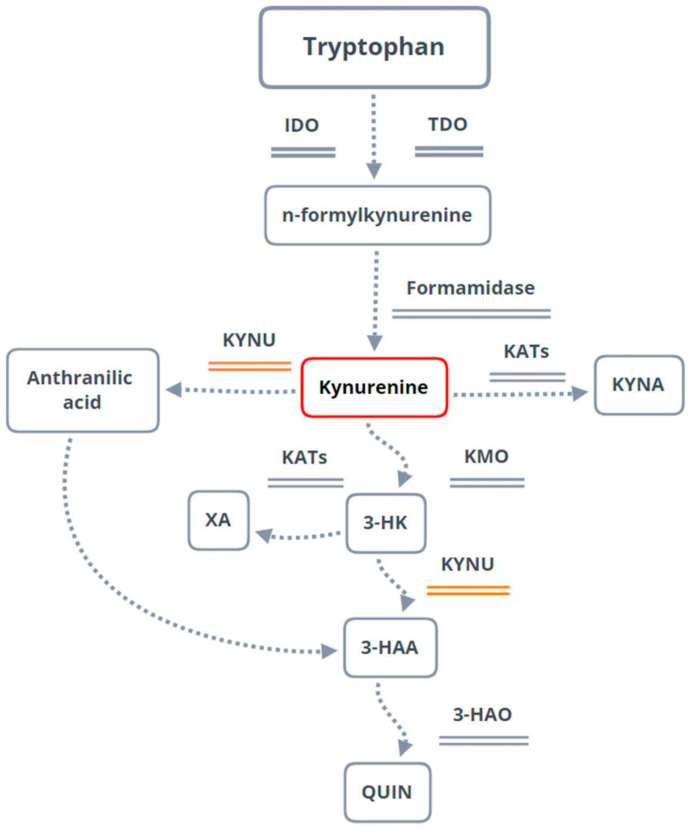Figure 5.
The tryptophan pathway, with emphasis on the kynurenine pathway (KP) and kynureninase (KYNU) participation. The KP is responsible for catabolizing 95% of the tryptophan available in the body [42,43]. In the brain, tryptophan is catabolized into formylkynurenine by the action of indoleamine 3-dioxygenase (IDO) and later in kynurenine (KYN) by formamidase. KYN can be processed by three different enzymes, leading to other routes. If processed by kynureninase (KYNU), the formation of anthranilic acid will occur, which can later serve as a precursor for the formation of 3-hydroxyanthranilic acid (3-HAA). If KYN is catabolized by kynurenine aminotransferases (KATs), kynurenic acid (KYNA) will form. Finally, KYN can be processed by kynurenine 3-monooxygenase (KMO), resulting in 3-hydroxykynurenine (3-HK), which can be metabolized by KYNU, giving rise to 3-HAA. XA—xanthurenic acid; 3-HA—3-hydroxyanthranilic acid 3,4-dioxygenase; QUIN—acid quinolinic; TDO—tryptophan 2,3-dioxygenase.

